How to fix yellow Windows laptop screen error
Discovering that your laptop screen is yellow can be quite annoying. Not only does it affect your work and entertainment experience, but it also makes you wonder what could be causing this unwanted coloration. This color change can occur due to both hardware and software problems on your system.
To fix yellowing on your laptop screen, it is important to explore the common causes behind it and learn about the various solutions that can be applied.
Common causes of yellow stains on laptop screens
Before continuing with troubleshooting, let's first explore the common causes that can cause this color anomaly. Understanding the potential culprit is key to effectively solving the problem.
1. Hardware problem
One of the main reasons for yellowing on your laptop screen could be hardware-related problems. If the display components or display cables are faulty or damaged, they may affect color display and lead to discoloration problems.
2. Install the software
Sometimes, it is the software settings on your laptop that cause the yellow stain. For example, you may have turned on the Night Light feature, which adjusts the color temperature of the screen to reduce blue light exposure but also unintentionally causes a yellowish tint.
3. Graphics driver problem
A laptop's graphics driver plays a key role in displaying colors on the screen. Outdated or corrupted graphics drivers can lead to display problems, including that annoying yellow tint you're seeing.
4. Color configuration
Color profiles determine how your laptop interprets and displays colors. Incorrect color profiles can skew colors, resulting in a yellowish display.
5. Calibrate the screen
If your laptop display calibration is misconfigured, it can affect color accuracy and result in a yellow tint. Calibration ensures the colors displayed on the screen match industry standards.
How to fix yellow laptop screen error on Windows
Now that you know the cause, it's time to learn about the solutions.
1. Fix hardware problems (screen error, display cable error)
Start by conducting a thorough physical inspection of your laptop screen. Look for any cracks, damage, or visible abnormalities on the screen surface. Physical damage to the screen may result in color abnormalities, including a yellowish tint.
If you notice any physical damage, such as a cracked or damaged screen, it's best to consult a professional technician or your laptop manufacturer for a screen replacement. .
If there is no visible screen damage, pay attention to the display cable. Make sure it is securely connected to both the screen and the laptop's motherboard. A loose or damaged display cable can lead to display problems, including color instability. Carefully reattach the cable to ensure a secure connection.
2. Turn off Night Light
If you notice a yellow tint on your laptop screen and suspect a software setting may be the culprit, this method will show you how to turn off the Night Light feature. This feature can adjust the color temperature of the screen, and turning it off can help restore normal colors.
Here's how to do it:
1. Click the Windows Start button.
2. Select the settings icon (gear shape) to launch Windows Settings.
3. In the Windows Settings window, click the System category .
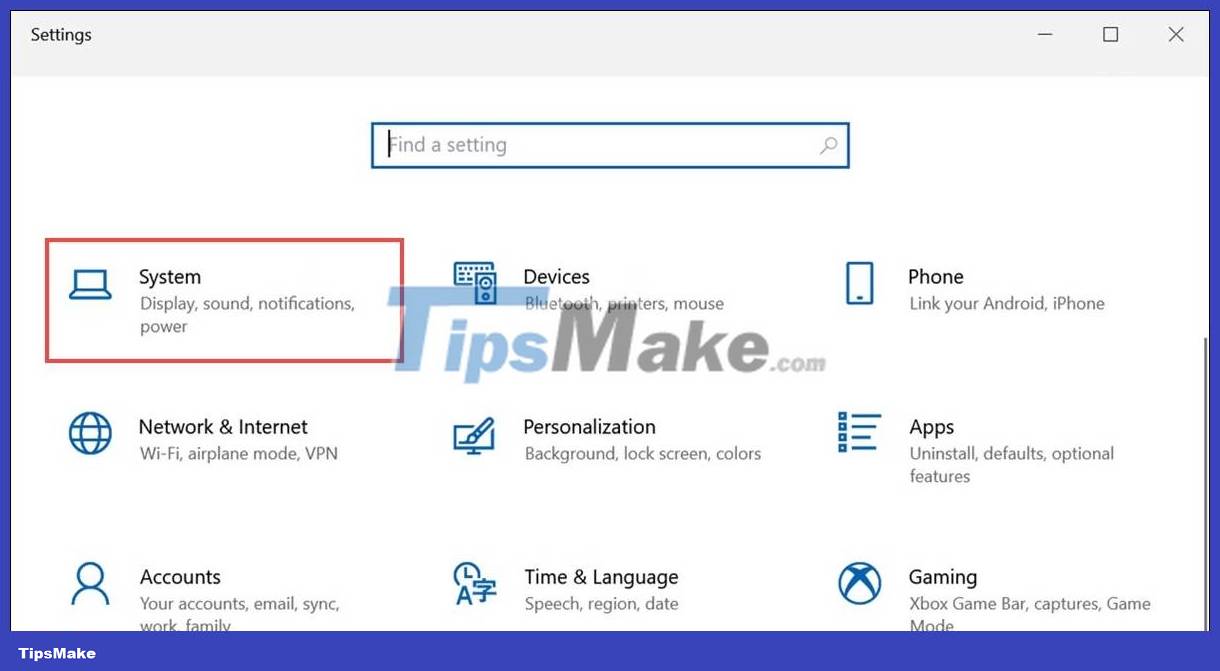
4. From the left sidebar, switch to the Display tab , if you haven't done so already, to access display-related settings.
5. In Display settings , find the Night Light feature and switch the switch to the Off position. This action will turn off the Night Light feature and revert your display to its default color temperature settings.
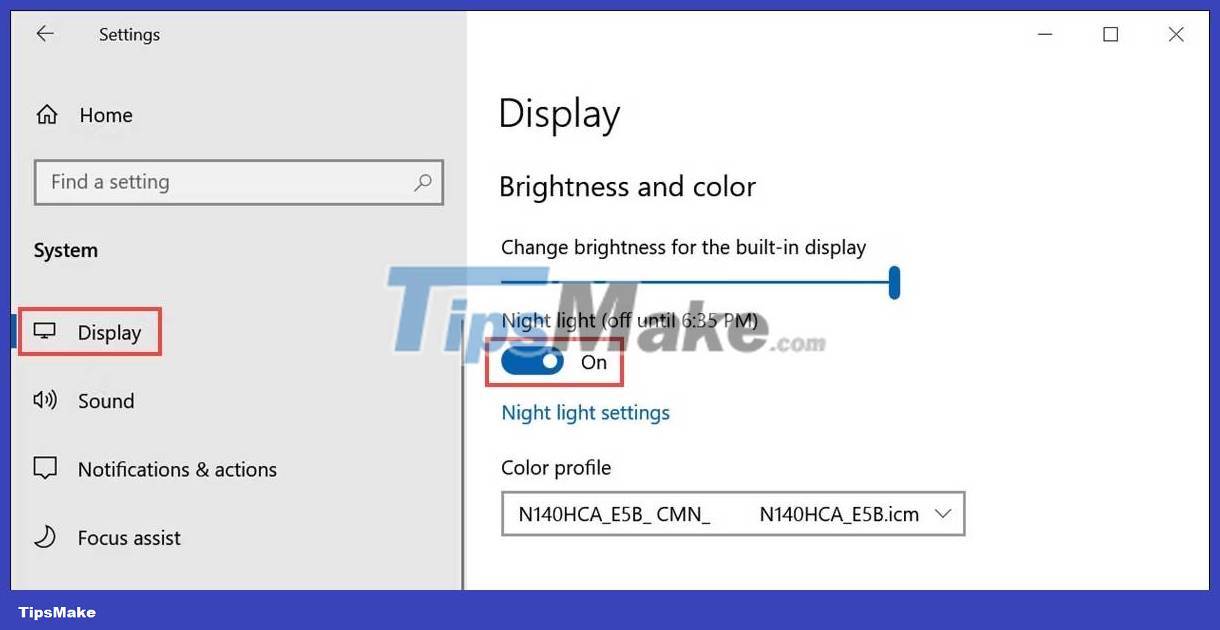
With the Night Light feature disabled, check to see if the yellow tint issue still exists. If the problem is resolved, you have successfully identified and resolved the cause.
3. Update graphics driver
Outdated or corrupted graphics drivers can lead to uneven colors, including yellowing of the screen. This method will guide you through the process of updating your graphics driver to ensure optimal color rendering.
Once the driver update is complete, restart your laptop and check if the yellow tint issue is resolved. Updating your graphics driver can often fix color-related problems.
4. Add new color profile
Inaccurate color profiles can distort the colors displayed on your laptop screen, causing a yellow screen problem.
Here's how to add a new color profile or modify an existing color profile to achieve accurate color representation:
1. You will need a Color Profile to add. It can be downloaded from official sources such as Adobe. Download and extract the ICC profile.
2. Launch Windows Settings and switch to the System category .
3. From the left, click Display to access display-related settings.
4. In Display settings, scroll down to find and click Advanced display settings .
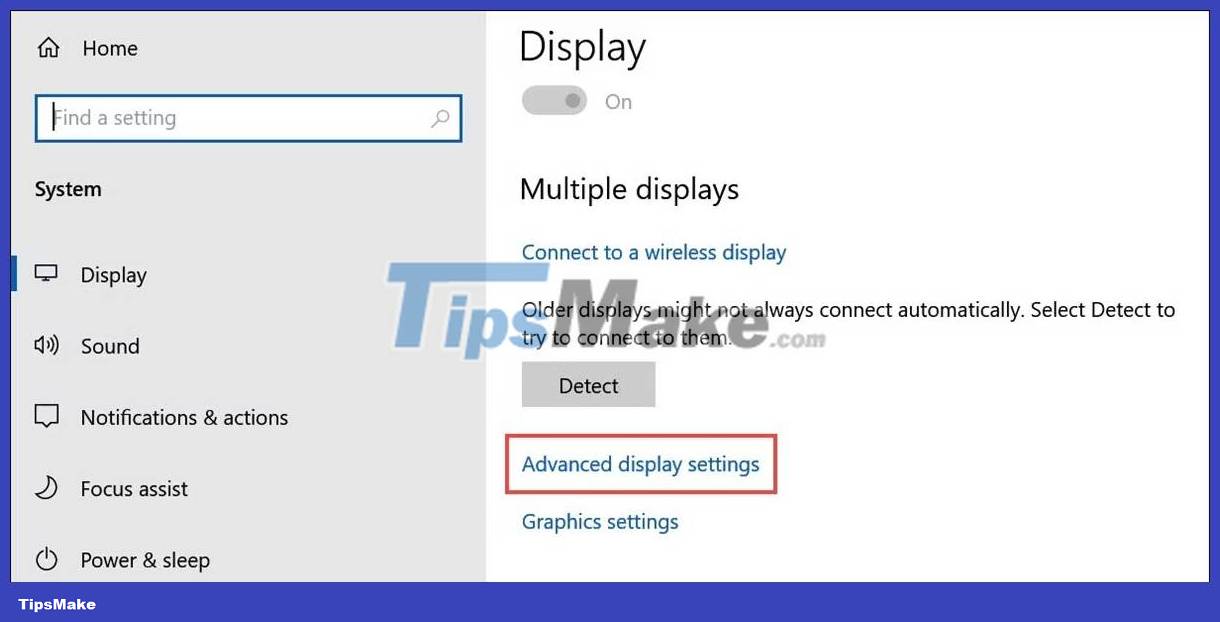
5. In the Advanced display settings window, select the Display adapter properties for Display 1 property .
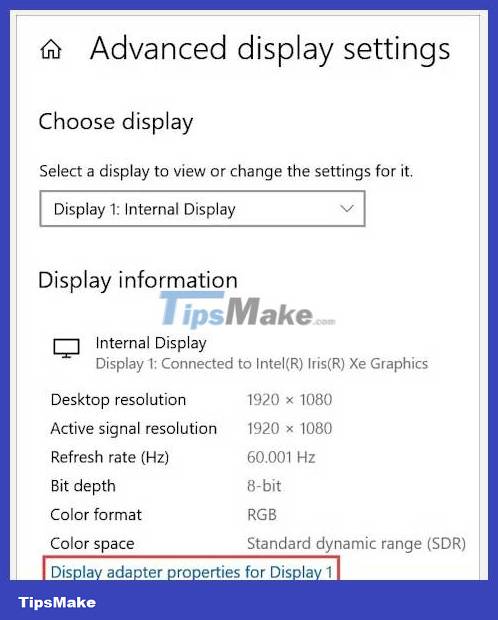
6. In the properties window, switch to the Color Management tab and select the Color Management option .
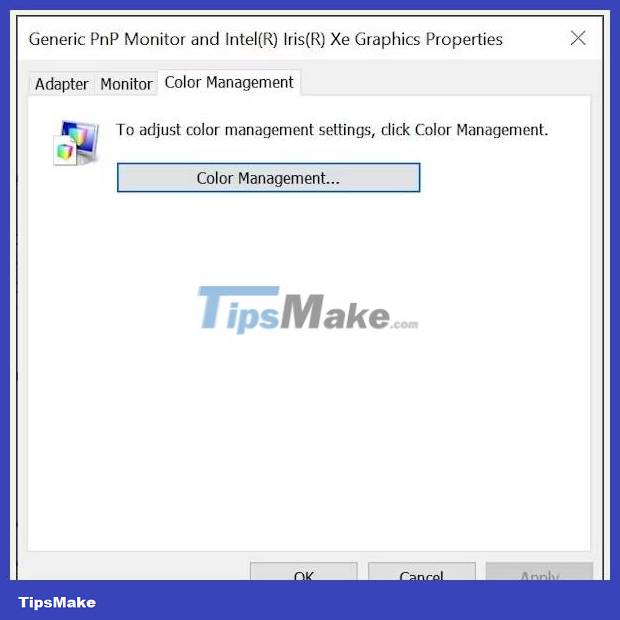
7. Click the Add button to add a new color profile.
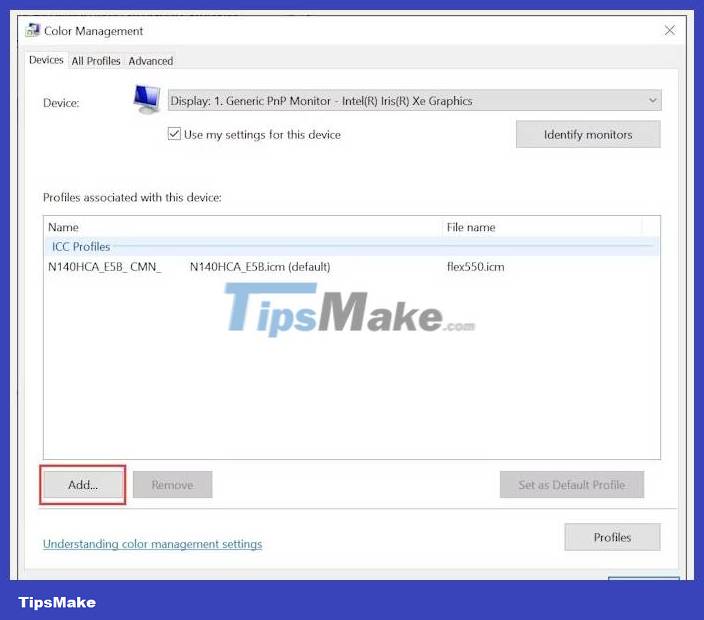
8. Next, click the Browse button and select one of the ICC profiles that you have downloaded and believe will solve the yellow screen problem.
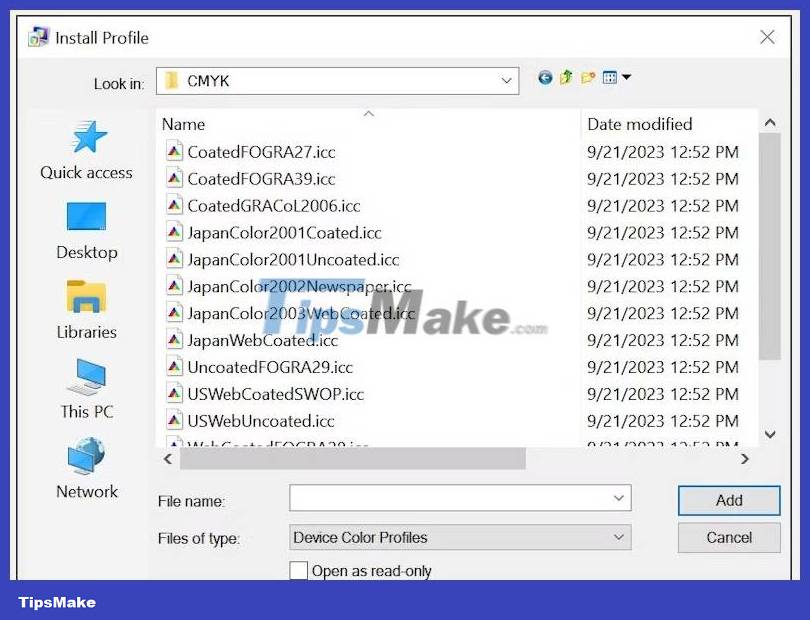
9. After adding a color profile, select that profile and click the Set as Default Profile button .
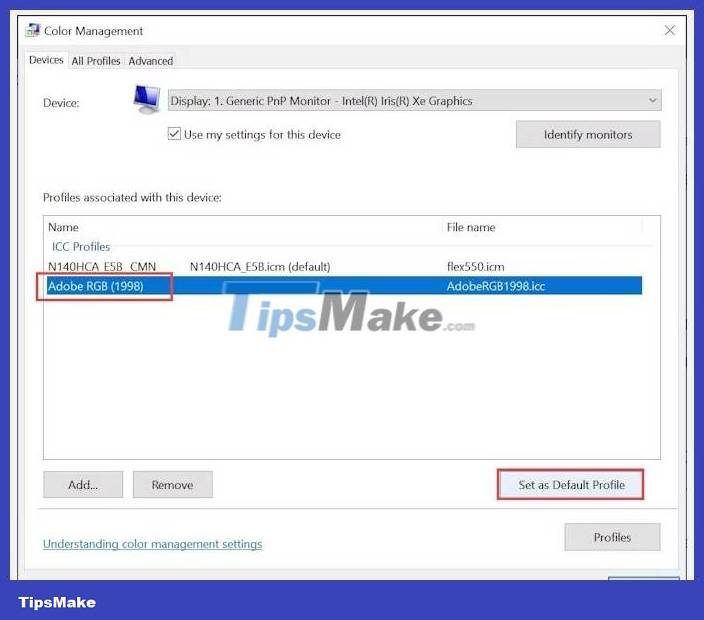
10. Check if the yellow screen issue has been resolved. If not, add another profile and set it as default.
Adding a new color profile can help adjust the way colors appear on your laptop screen. Experiment with different profiles until you find one that eliminates yellowing.
5. Calibrate display color
Monitor calibration ensures colors are accurately represented on your laptop screen. If the yellow screen problem persists, this method will walk you through the steps to calibrate your display for optimal color accuracy.
Here's how to do it:
1. On the Windows search bar, type 'Calibrate display color' and click its icon to launch it.
2. Maximize the window to full screen if the entire screen is yellow.
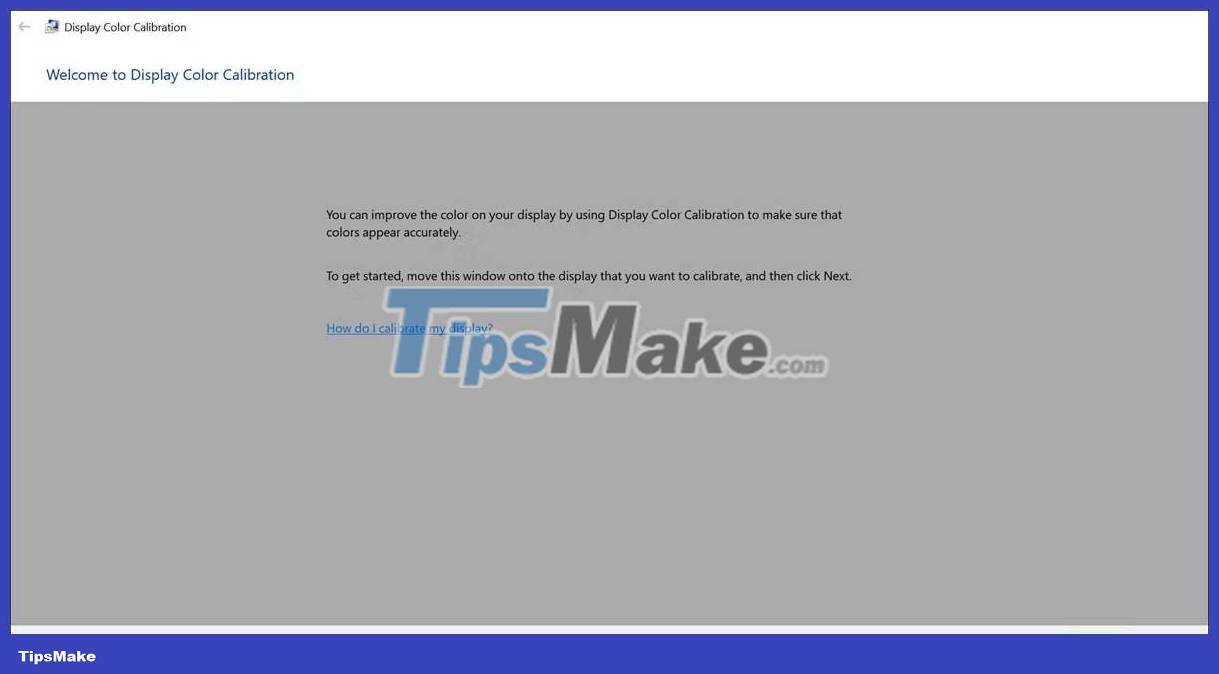
3. Now, follow the instructions to fix the yellow tint on the screen.
4. Move the slider to adjust the screen gamma if that is causing the problem.
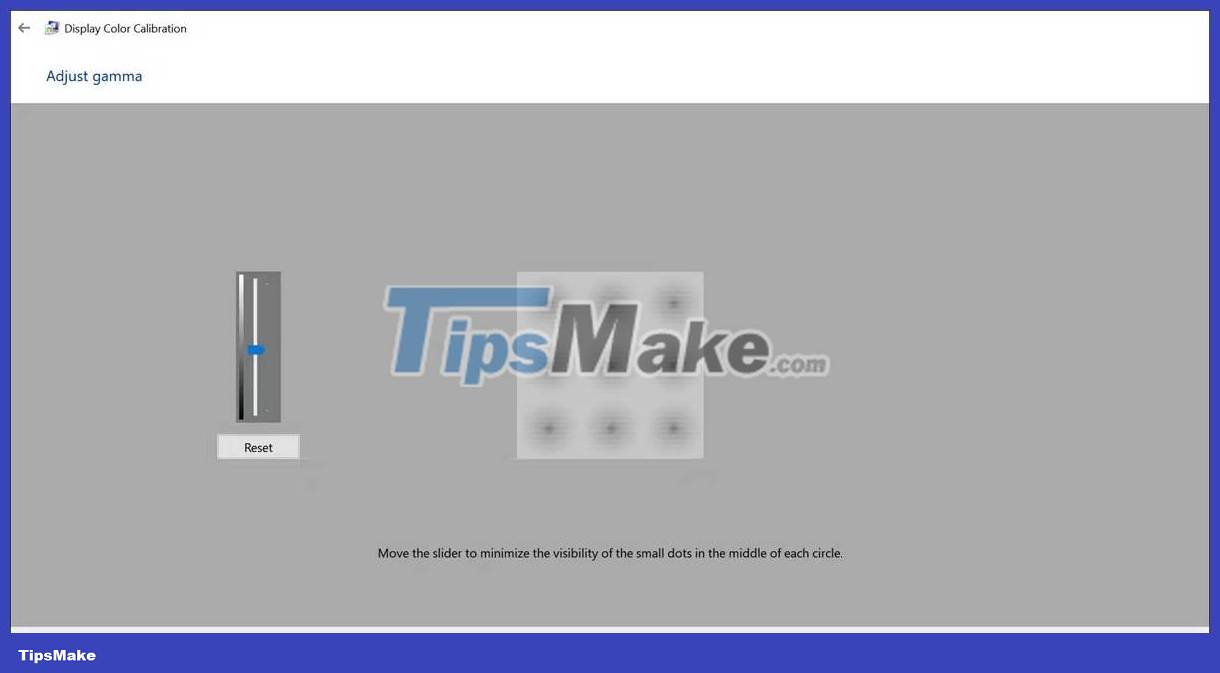
5. Next, adjust the brightness and contrast to your preference.
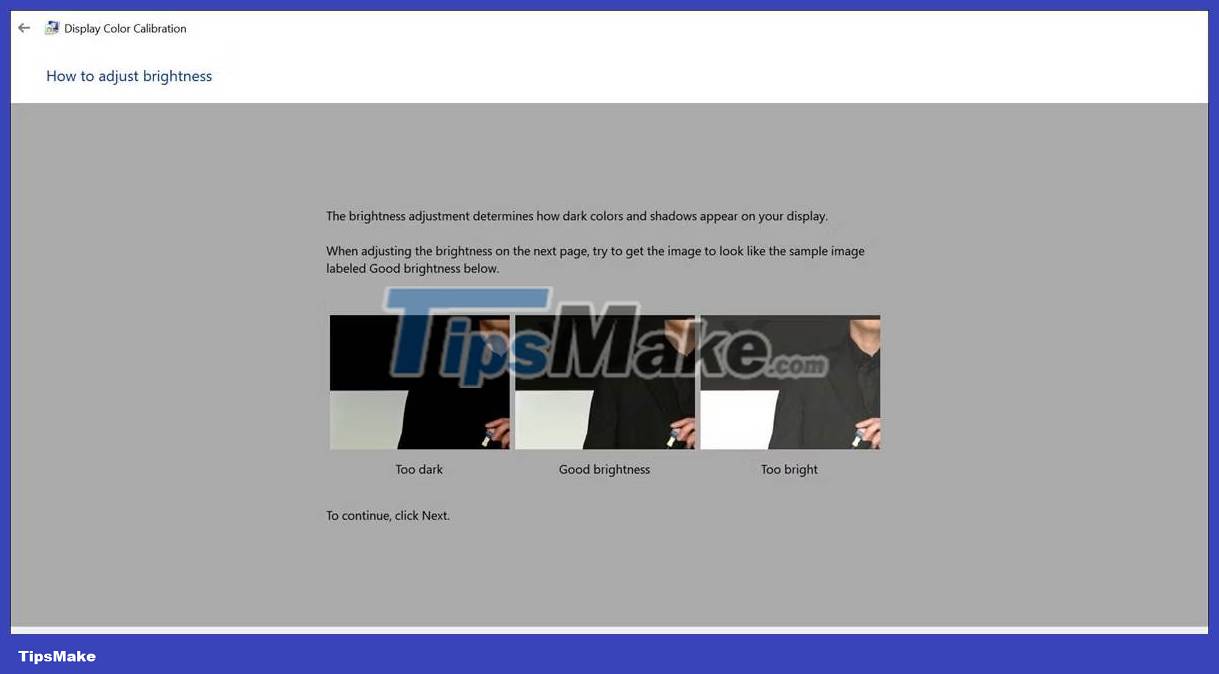
6. Finally, compare your current calibration with the previous calibration and check if the yellow color disappears with this new calibration.
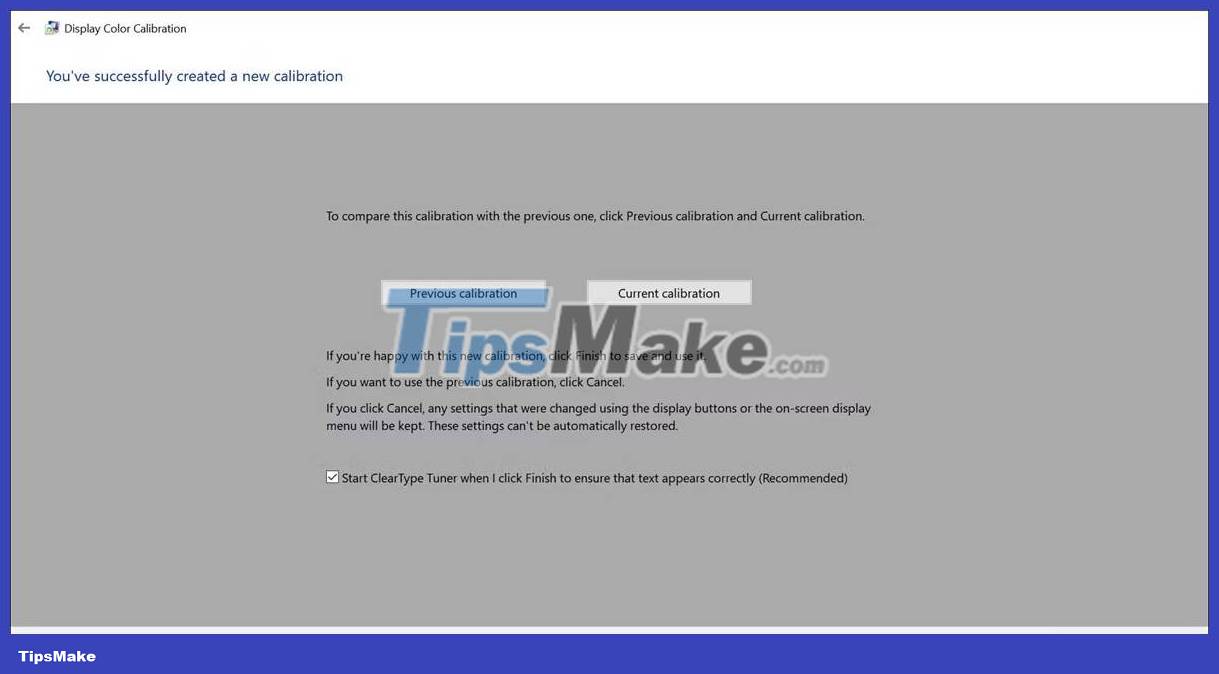
Calibrating your display will ensure that colors are represented accurately, which can help eliminate color anomalies such as yellow tones.
6. Seek professional help
If none of the above solutions work and the yellow tone problem persists, you should seek professional help. Consult a technician or contact your laptop manufacturer for instructions. They can perform in-depth diagnostics, identify any underlying hardware problems, and provide necessary repairs or replacements.
You should read it
- How to fix vertical screen stripes, horizontal stripes
- How to use a laptop as the second screen for laptops and computers
- How to quickly check the laptop screen for any damaged pixels?
- How to record Windows 11 laptop screen videos
- Instructions on how to fix blue screen errors on computers running Windows
- Steps to fix Windows computer screen not turning off after set time
- Steps to fix laptop screen flickering
- Windows 8 touch laptop is about to drop
May be interested
- Laptop screen error is blank - Causes and solutions
 the laptop screen is white and white is not a common error, but it is annoying and affects users. click to see the cause and how to fix the laptop white screen error!
the laptop screen is white and white is not a common error, but it is annoying and affects users. click to see the cause and how to fix the laptop white screen error! - How to prevent blue screen error on Laptop, PC
 the blue screen error appears making computer users worry, find solutions, this error does not rule out laptop or pc. in the limit of this article, tipsmake will guide you how to prevent blue screen error on laptop, pc.
the blue screen error appears making computer users worry, find solutions, this error does not rule out laptop or pc. in the limit of this article, tipsmake will guide you how to prevent blue screen error on laptop, pc. - This is how to reset network settings on Windows 10 with just one click
 if there are problems with internet connection errors on windows 10, such as a computer, laptop does not receive wired network, can not connect to the network or connect but can not access the network, slow network, flickering network, network yellow exclamation, wifi yellow exclamation ... then you can reset the network on your windows 10 computer.
if there are problems with internet connection errors on windows 10, such as a computer, laptop does not receive wired network, can not connect to the network or connect but can not access the network, slow network, flickering network, network yellow exclamation, wifi yellow exclamation ... then you can reset the network on your windows 10 computer. - Fix Windows 8 error when encountering a black screen
 windows 8 is preferred because of its smooth interface and features that catch up with the new trend, but windows 8 users often encounter a black screen error on startup without understanding why and how to fix it.
windows 8 is preferred because of its smooth interface and features that catch up with the new trend, but windows 8 users often encounter a black screen error on startup without understanding why and how to fix it. - How to fix the computer screen error is reversed
 reverse rotation screen is a common mistake that many people make when using windows 7/8 / 8.1 / 10 computers, because while pressing the wrong key on certain operations. or install software, games, ... to change windows settings. so what to do to bring the computer back to a standard angle?
reverse rotation screen is a common mistake that many people make when using windows 7/8 / 8.1 / 10 computers, because while pressing the wrong key on certain operations. or install software, games, ... to change windows settings. so what to do to bring the computer back to a standard angle? - Fix the error of not adjusting screen brightness on Windows 10
 after upgrading from windows 7 or 8.1 to windows 10, some users encounter errors that cannot customize the brightness of the screen. many users feel uncomfortable about this error because the screen is too bright or too dark and cannot be adjusted. the cause of the error is because the driver is not compatible. to fix this error, please refer to the following article of network administrator.
after upgrading from windows 7 or 8.1 to windows 10, some users encounter errors that cannot customize the brightness of the screen. many users feel uncomfortable about this error because the screen is too bright or too dark and cannot be adjusted. the cause of the error is because the driver is not compatible. to fix this error, please refer to the following article of network administrator. - How to fix iPhone screen errors with color noise
 your iphone screen, ipad display unusual colors? this situation may be due to a hardware error, but it may also be due to a software error, and you can fix it in a few ways.
your iphone screen, ipad display unusual colors? this situation may be due to a hardware error, but it may also be due to a software error, and you can fix it in a few ways. - Error opening laptop screen, black screen, what to do?
 have you ever encountered a situation where your laptop screen won't turn on or your laptop screen is completely black? find out how to fix it very simply at home.
have you ever encountered a situation where your laptop screen won't turn on or your laptop screen is completely black? find out how to fix it very simply at home. - Instructions for replacing a broken laptop screen
 if you accidentally damage your laptop screen or there are many dead spots appearing, don't worry. you can completely replace the screen for your laptop, just follow the instructions below.
if you accidentally damage your laptop screen or there are many dead spots appearing, don't worry. you can completely replace the screen for your laptop, just follow the instructions below. - How to fix white screen on laptop
 with the blue screen error, the cause may be hardware or software. and to fix the white screen, you just need to check the computer hardware, especially the monitor cable, the video card and the monitor. tipsmake will guide you on a number of ways to manually correct the error.
with the blue screen error, the cause may be hardware or software. and to fix the white screen, you just need to check the computer hardware, especially the monitor cable, the video card and the monitor. tipsmake will guide you on a number of ways to manually correct the error.










 7 best budget-friendly Samsung tablets
7 best budget-friendly Samsung tablets How to turn on HP laptop keyboard light properly and simply
How to turn on HP laptop keyboard light properly and simply Knowledge you need to know when upgrading SSD for laptop
Knowledge you need to know when upgrading SSD for laptop Laptop does not have a camera: Causes and solutions
Laptop does not have a camera: Causes and solutions Top 7 hottest cheap touch laptops in 2023
Top 7 hottest cheap touch laptops in 2023 What is Intel Core i5 1135g7? Detailed parameters and performance
What is Intel Core i5 1135g7? Detailed parameters and performance